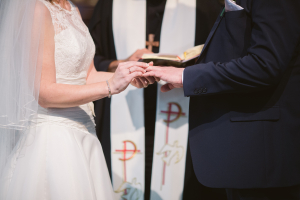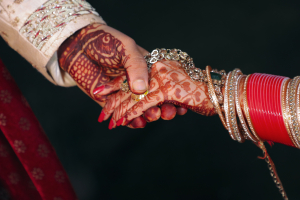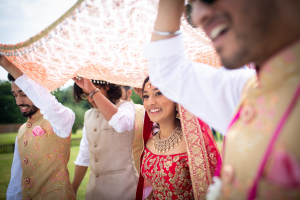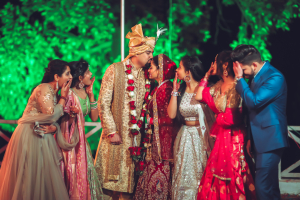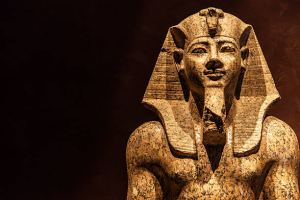Top 9 Interesting Facts about Assamese Wedding
Assamese weddings are a captivating tapestry of tradition, culture, and celebration, offering a unique glimpse into the rich heritage of the region. Exploring ... read more...these fascinating elements provides a window into the heart of Assamese society and the significance it places on unity, tradition, and communal joy.
-
Traditional attire plays a pivotal role in Assamese weddings, serving as a captivating expression of the region's cultural heritage and aesthetic sensibilities. The bride's attire, in particular, stands out as a masterpiece of Assamese craftsmanship and elegance. She graces the occasion adorned in the timeless mekhela chador, a two-piece ensemble that seamlessly combines tradition and style. The mekhela, a graceful wrap-around skirt, is meticulously adorned with intricate motifs and patterns that reflect the artistic prowess of Assamese weavers. Draped over the mekhela is the chador, an exquisite piece of fabric that cascades gracefully over the bride's shoulders, adding an aura of grace and sophistication.
Simultaneously, the groom's attire encapsulates the essence of dignified masculinity and cultural pride. He dons a dhoti and kurta, a combination that holds both historical significance and contemporary relevance. The dhoti, an unstitched garment intricately wrapped around the waist and legs, symbolizes tradition and evokes a sense of rootedness. Paired with the dhoti is the kurta, a long tunic often embellished with intricate embroidery or designs. The combination of dhoti and kurta exudes an air of timeless elegance, creating a distinctive look that reflects both the groom's personal style and the cultural ethos of the Assamese community.
The mekhela chador and the groom's dhoti-kurta ensemble serve as more than just clothing choices; they represent a deep respect for heritage, an embodiment of cultural pride, and a celebration of the unique identity of the Assamese people.
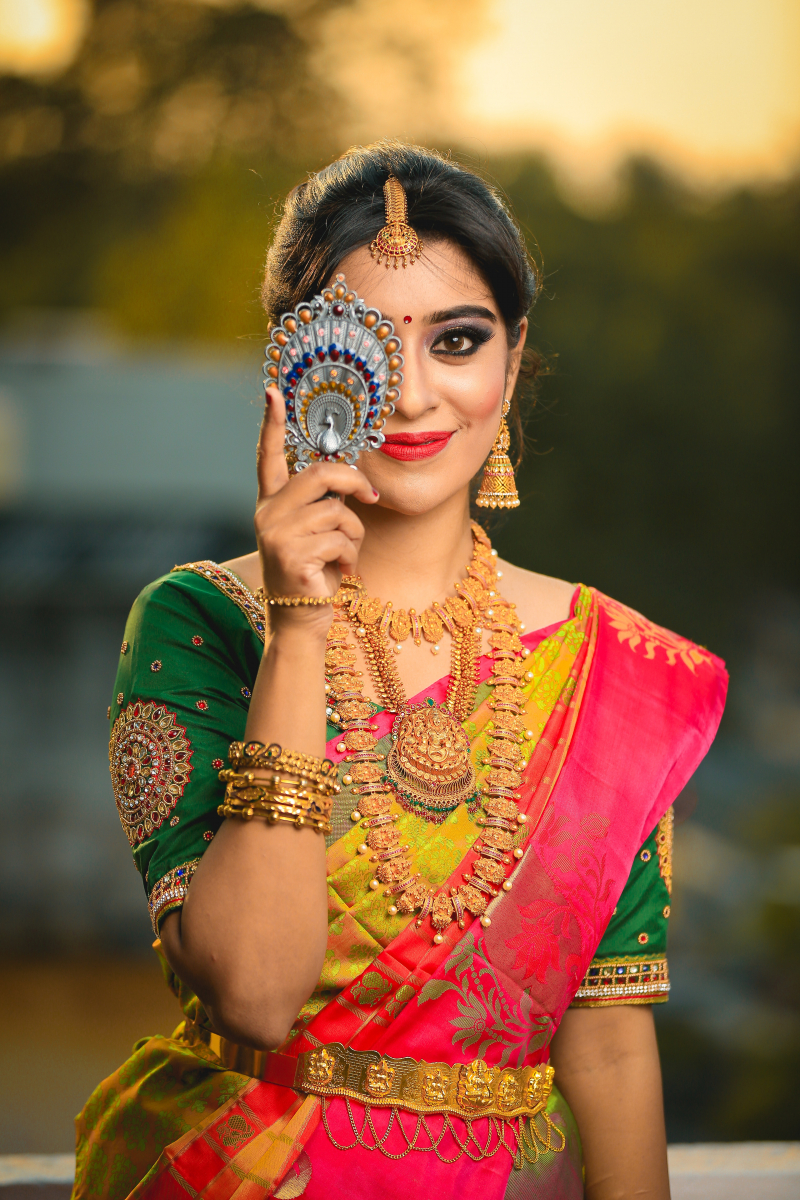
Photo by Bella Pon Fruitsia on Unsplash 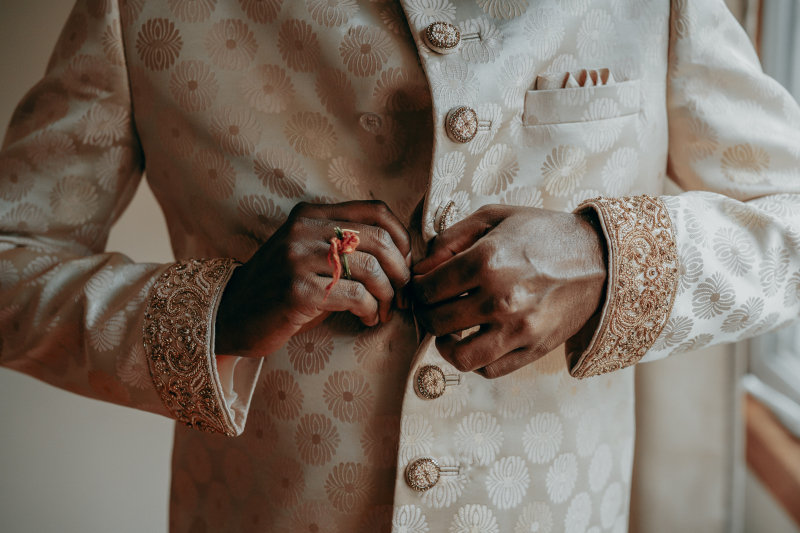
Photo by Clay Banks on Unsplash -
One such prominent pre-wedding ritual in Assamese weddings is the Juran Diya, which embodies the spirit of giving and bonding. During this ritual, the groom's family presents a variety of gifts to the bride's family, symbolizing acceptance, respect, and the forging of familial ties.
The Tel Diya ceremony is yet another pre-wedding tradition. During this ritual, oil is applied to the bride and groom's bodies as a symbolic act of purification and preparation for their upcoming journey as a married couple. The application of oil not only cleanses the body but is also believed to cleanse the soul, aligning them with positive energies and blessings as they embark on this new phase of life together.
In addition, the Pitua ceremony holds immense significance in Assamese weddings. This traditional engagement ceremony involves the exchange of betel nuts and leaves between the families, symbolizing the formal acceptance of the alliance. It is a joyous occasion for both families to bless the couple and celebrate the impending union. The Pitua ceremony showcases the respect for tradition and the sense of communal celebration that characterize Assamese weddings.

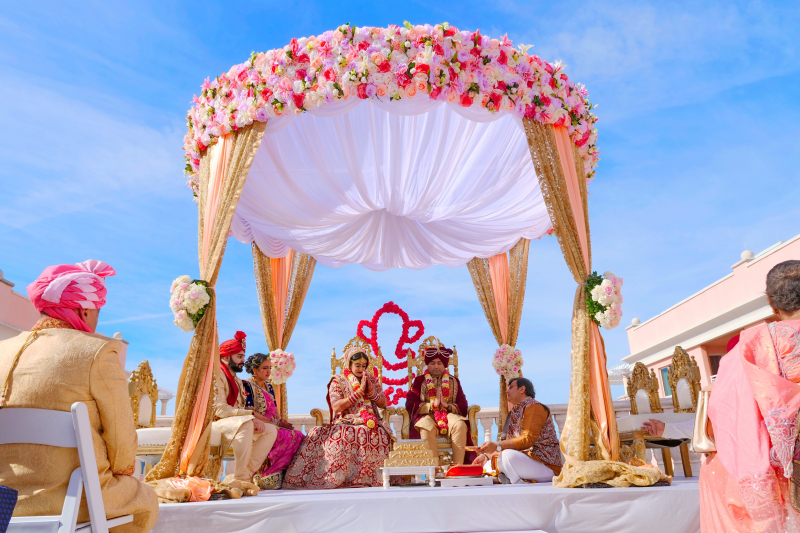
-
Assamese weddings, known for their cultural richness and deep-rooted traditions, often unfold in settings that embody the region's penchant for simplicity and serenity. This choice of venue reflects the community's intrinsic values and the desire to create an environment where the sacredness of the occasion takes center stage. Temples, with their spiritual aura, serve as popular locations for Assamese weddings, providing a tranquil backdrop that resonates with the spiritual significance of the ceremony. Equally favored are the intimate confines of the bride's family home, where the warmth of familial bonds merges harmoniously with the sanctity of the rituals.
These settings symbolize the essence of togetherness, allowing the extended community to be an integral part of the couple's joyous union. The choice of these simple and serene settings reflects the community's collective spirit, where the focus remains steadfastly on the age-old customs, the couple's love story, and the blessings that surround them.
The beauty of these unassuming venues lies in their ability to create an ambiance that is simultaneously reverent and festive. As Assamese weddings take place against the backdrop of nature's tranquility or the familiarity of familial surroundings, they evoke a sense of authenticity that connects the couple, their families, and their heritage. These settings not only pay homage to tradition but also emphasize the core values of humility, unity, and the sanctity of the marital bond, making Assamese weddings truly unique and spiritually fulfilling occasions.
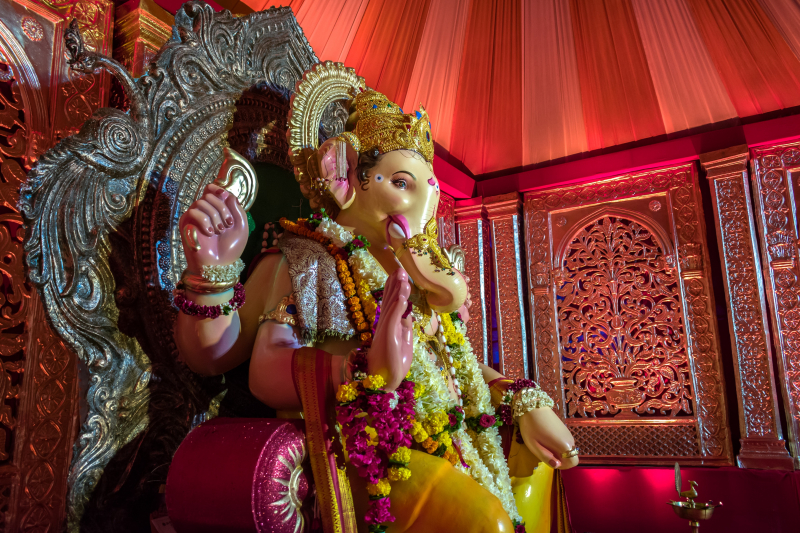
Photo by Sonika Agarwal on Unsplash 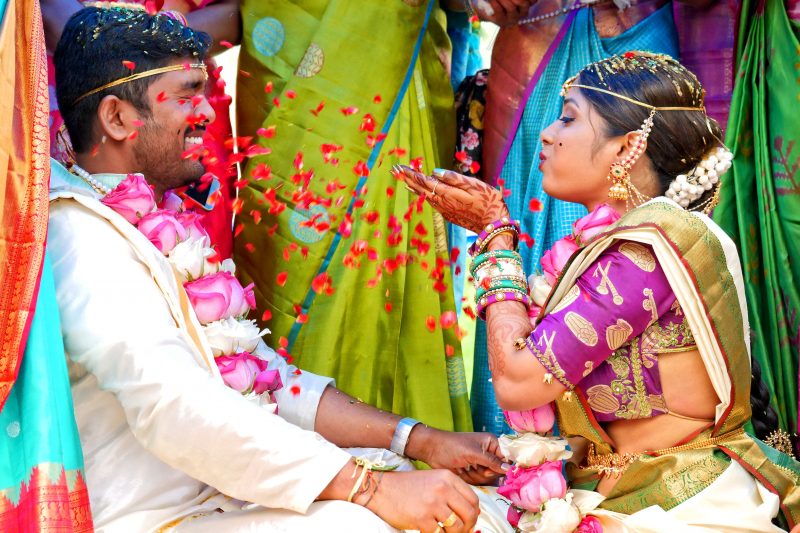
-
During the joyous Assamese wedding festivities, the vibrant and captivating Bihu dance performances emerge as an enchanting spectacle that adds an extra layer of cultural richness and celebratory fervor. As the dhol (drum) beats resonate through the air, and the melodic tunes of flutes fill the atmosphere, dancers dressed in traditional attire come alive with rhythmic footwork, graceful gestures, and infectious energy.
The Bihu dance is not limited to mere movement; it's a storytelling medium that encapsulates the spirit of Assam's culture and history. With each twirl, step, and gesture, the dancers convey tales of love, harmony, and the bonds that tie the community together. It's a celebration of the unity that permeates Assamese life, transcending generations and embracing diversity. The Bihu dance mirrors the soul of Assam, and during weddings, it becomes a unifying force that brings families, friends, and neighbors together in shared jubilation.
As the vibrant colors of traditional attire blend with the vivid expressions of the dancers, the Bihu dance becomes a visual symphony that resonates with all who witness it. The Bihu dance does more than entertain; it reaffirms the beauty of tradition and its role in binding generations in a shared love for Assamese customs and celebrations.
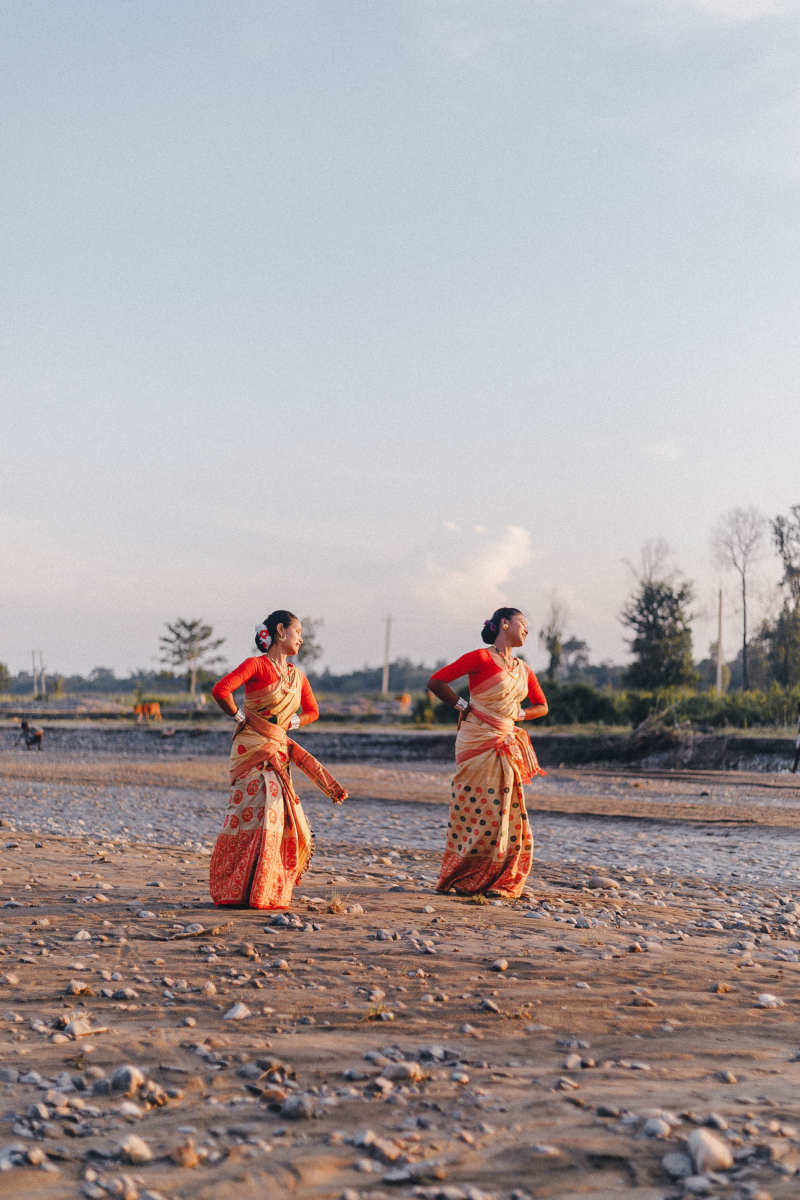
Photo by Nilotpal Kalita on Unsplash 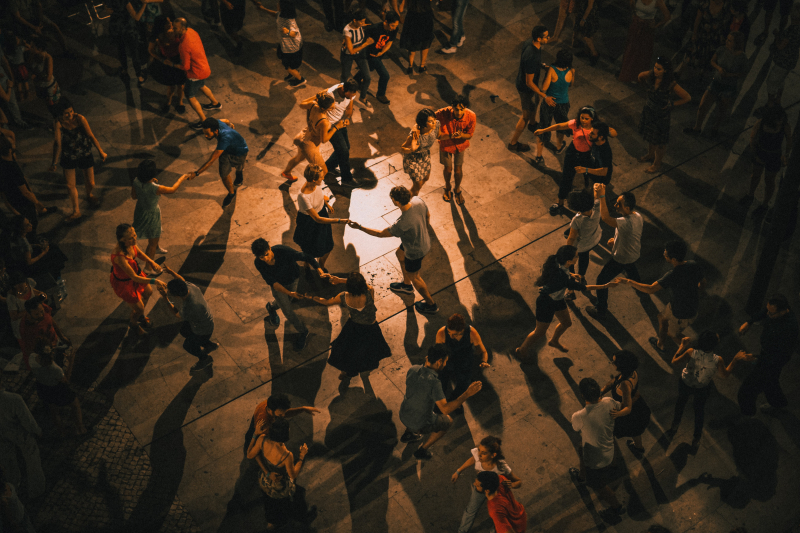
Photo by Ardian Lumi on Unsplash -
Assamese weddings are emblematic of the community's remarkable spirit of unity and festivity. It is a time when friends, neighbors, distant relatives, and well-wishers converge to share in the joy of the couple's union. This collective celebration creates an ambiance that is both heartwarming and vivacious, as people from various walks of life come together in harmony. A distinctive and heartening tradition observed during Assamese weddings is the serving of a traditional meal known as "Jolpan" to the guests.
Jolpan is a culinary tradition that goes beyond satiating hunger; it is an embodiment of the Assamese spirit of hospitality and camaraderie. The spread includes an array of delectable delights, ranging from light snacks to delightful sweets, and savory treats that are intricately linked to Assamese culture and cuisine. These treats are often prepared using locally sourced ingredients, adding an authentic touch to the culinary experience. The act of serving Jolpan symbolizes the community's dedication to welcoming and nourishing guests with the best of Assamese flavors.
As guests indulge in the flavors of Assamese cuisine, they not only partake in the couple's happiness but also immerse themselves in the cultural vibrancy of the region. The act of sharing food becomes a symbol of the celebration's inclusivity and the commitment of the Assamese community to making every guest feel like an integral part of the festivities.

Photo by CHUTTERSNAP on Unsplash 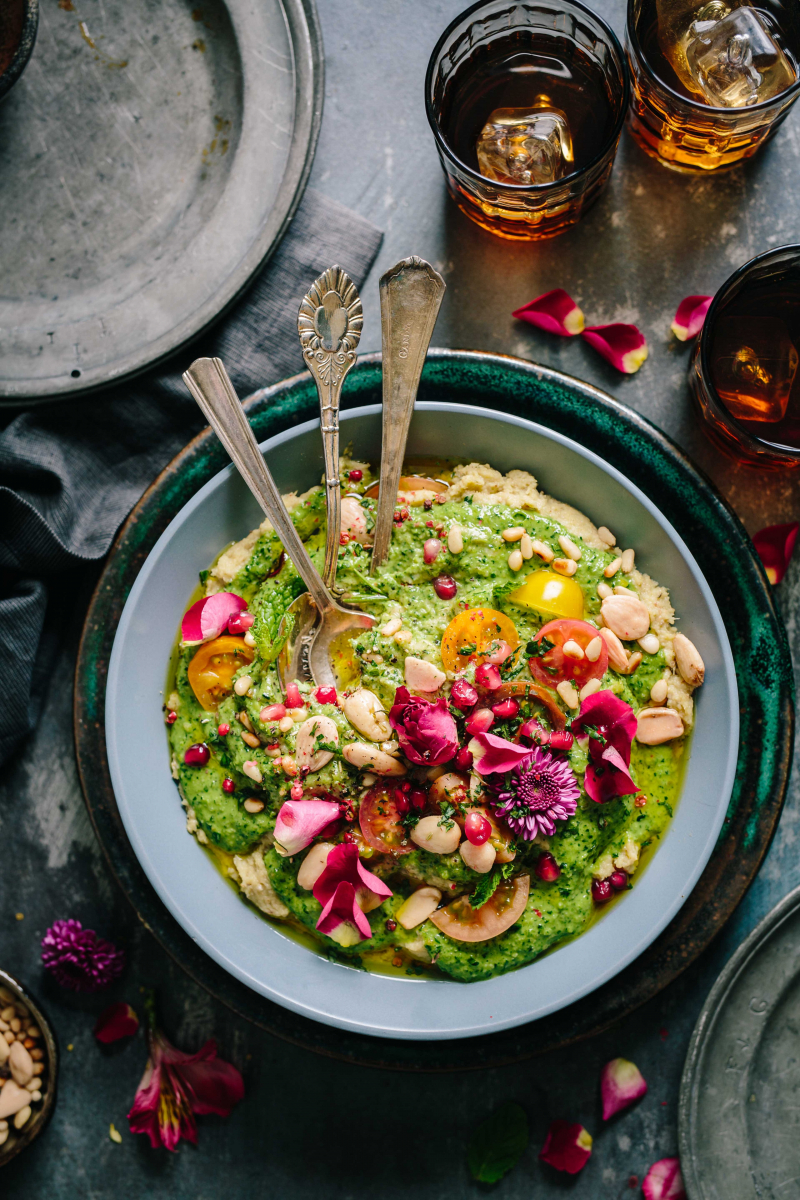
Photo by Brooke Lark on Unsplash -
The Pani Tula ceremony is an integral part of Assamese weddings. This ceremony takes place on the morning of the wedding day, symbolizing the ceremonial purification of the bride and groom, preparing them for the auspicious union. The term "Pani Tula" translates to "water utensil" in Assamese, and the ritual involves the washing of the bride and groom's feet with water and various traditional ingredients.
Typically held separately for the bride and groom, the Pani Tula ceremony is performed by their respective maternal uncles or aunts. It signifies the family's blessings for a pure and harmonious marriage, as well as the transition of the bride and groom from their individual lives to a shared life together. The use of turmeric, considered auspicious, is a common practice during this ritual. The water used for washing the feet often contains pithas (traditional Assamese sweets), betel nuts, and coins, symbolizing prosperity, nourishment, and wealth.
This ritual is not only a visual spectacle but also a heartfelt act that carries immense cultural significance. It is a bridge between tradition and the present, connecting generations and bringing families together. The Pani Tula ceremony embodies the Assamese value of respecting and honoring one's elders, as the elders play a central role in this ritual. Moreover, it emphasizes the importance of humility, purity, and a strong foundation in the couple's journey towards marital bliss.
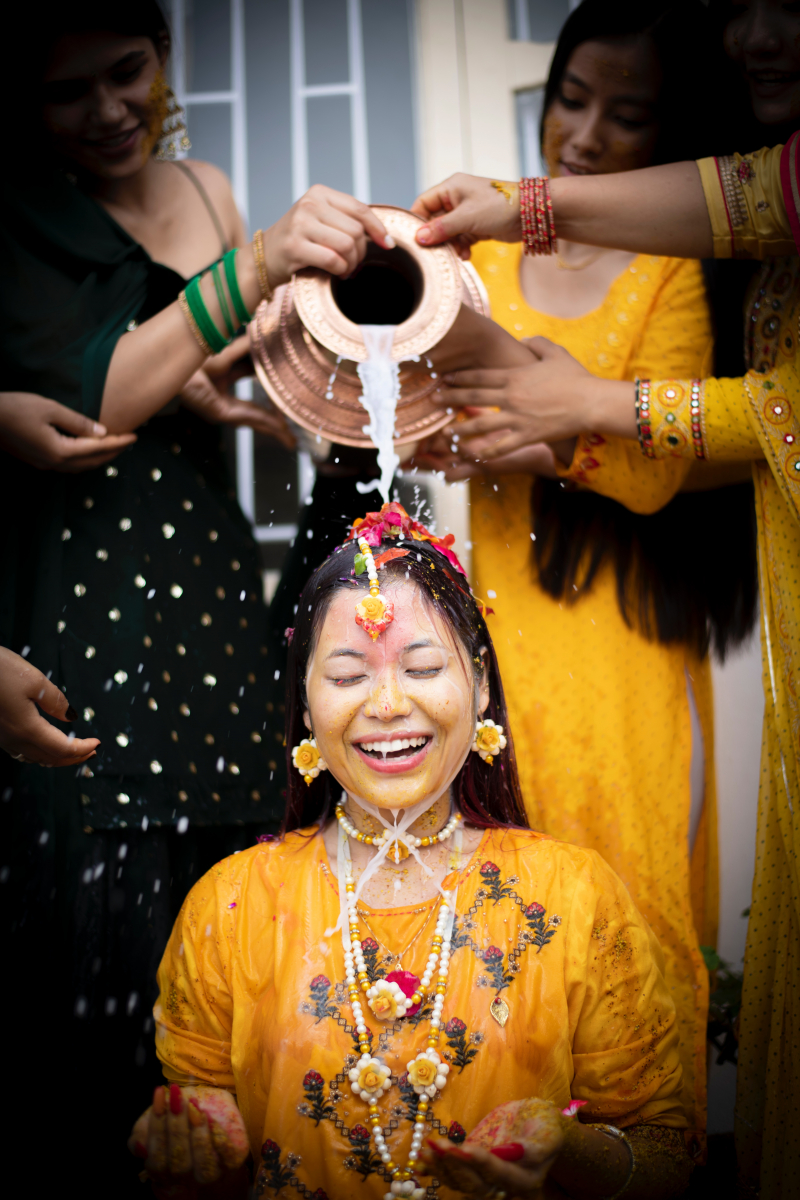
Photo by Ksav Pun on Unsplash 
Photo by Awesome Sauce Creative on Unsplash -
The exchange of gamusas, those revered traditional Assamese towels, emerges as a poignant and deeply meaningful tradition within the intricate mosaic of Assamese wedding ceremonies. As the bride and groom exchange these meticulously woven and intricately adorned towels, they are partaking in a ritual that goes beyond the physical exchange, embodying the emotional exchange of vows, commitments, and the promise of a shared future.
The gamusa, a symbol of purity and respect in Assamese culture, carries with it the weight of tradition, the rich heritage of the land, and the values that the couple will carry with them into their married life. With each fold and exchange, the gamusas become more than just pieces of fabric; they transform into emblems of unity, love, and mutual understanding. This act, seemingly simple, symbolizes the profound connection that the bride and groom are forging as they embark on their journey together.The exchange of gamusas is not just a ritual; it's a thread that weaves together the tapestry of families, traditions, and aspirations. It's a bridge that connects the past with the present and the future, signifying the joining of two families, two lives, and two destinies. The carefully woven threads of the gamusa mirror the weaving of lives, as two individuals come together to create a life that is bound by love, mutual respect, and shared dreams.
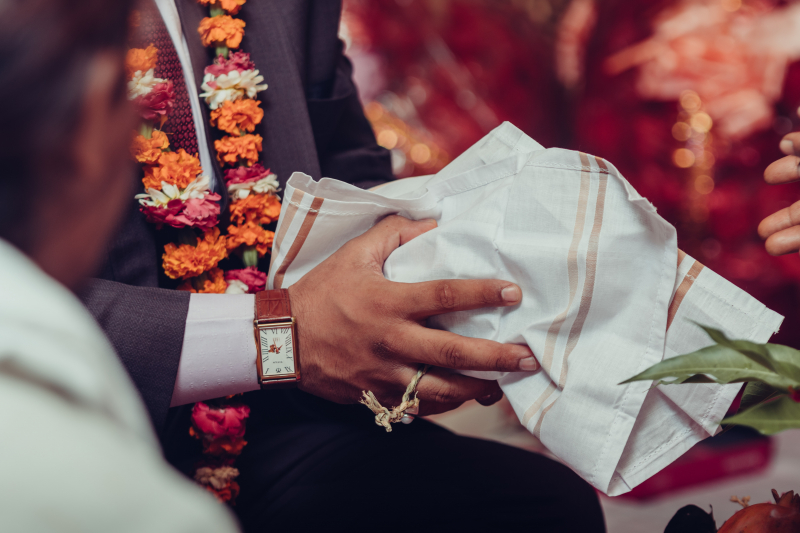
Photo by Awesome Sauce Creative on Unsplash 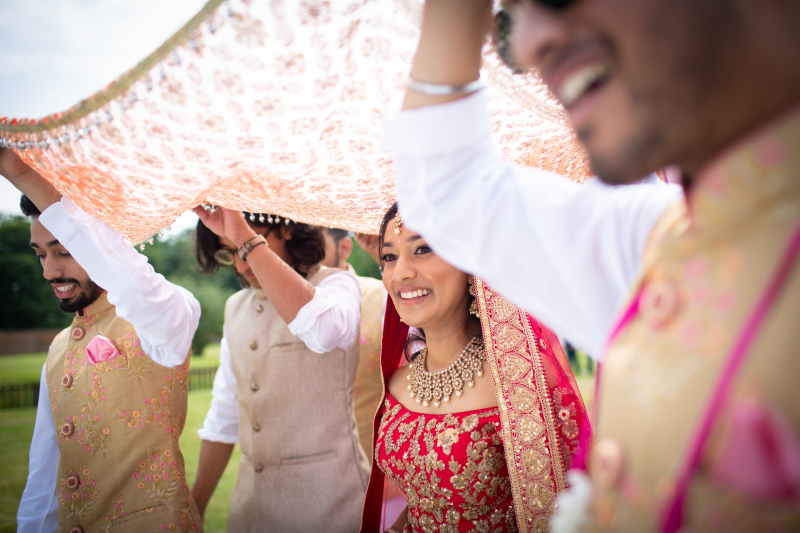
Photo by Raj Rana on Unsplash -
The Biya Naam, a pivotal and revered ceremony in Assamese weddings, stands as the crowning moment where the couple embarks on a profound journey of togetherness and shared dreams. Set before the sanctified holy fire, this ceremony transforms into an enchanting tableau of love, commitment, and spirituality. As the couple takes their seats, surrounded by the warmth of the flames and the blessings of their families, they exchange vows that transcend the boundaries of words.
As the flames dance before them, the couple's vows reverberate with the echoes of generations past and generations yet to come. The holy fire becomes a medium through which they connect with their ancestors, seeking their blessings and channeling their collective wisdom. The Biya Naam reinforces the sacredness of the institution of marriage, reminding the couple that they are now bound by a promise that transcends time, encompassing both the temporal and the eternal.
The couple, seated before the holy fire, not only pledge their devotion to each other but also pledge to foster an environment of love and support, nurturing the flames of their relationship just as the holy fire burns bright and constantly.
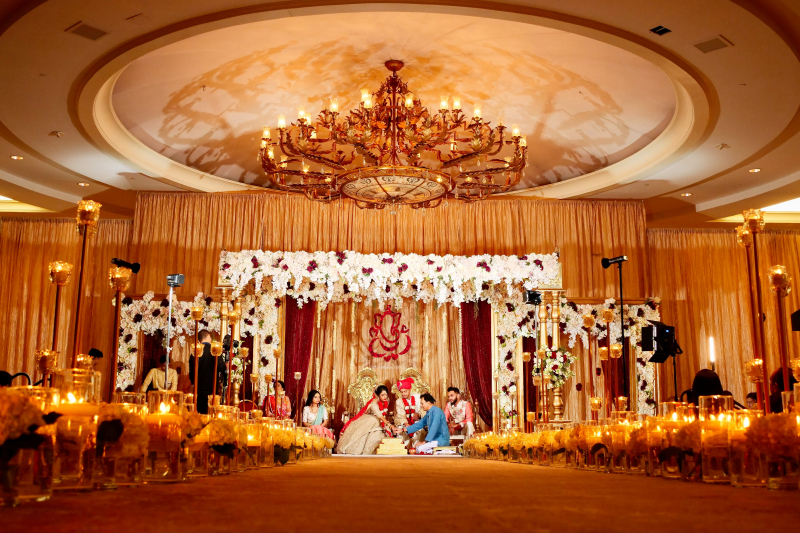
Photo by AMISH THAKKAR on Unsplash Video by Sonkor Vision -
In Daiyan Diya ritual, the groom's family sends a bowl of sweet curd to the bride's house. The bowl of curd symbolizes the sweetness of their union, and it carries with it a profound gesture of camaraderie and goodwill. Upon receiving the curd, the bride partakes in this delectable treat, savoring its flavor as a symbol of the love and sweetness that will permeate her married life. As she consumes half of the curd, she imbues it with her hopes and dreams, turning it into a vessel of shared aspirations. The remaining half is then sent back to the groom's house, a tangible connection that carries the bride's blessings, joy, and affection.
Daiyan Diya ritual holds significance beyond its delightful gastronomic aspect. It embodies the essence of mutual respect, care, and harmony that underpin the marital journey. By partaking in the sweet curd, the bride not only embraces the flavors of her new family but also extends a hand of friendship and unity.
The gesture of sending back the curd carries a subtle promise—that just as sweetness travels from one household to another, so too will the blessings, joy, and affection between the families. This act of sharing and returning symbolizes the cyclical nature of love, unity, and mutual support that will shape the couple's life together.
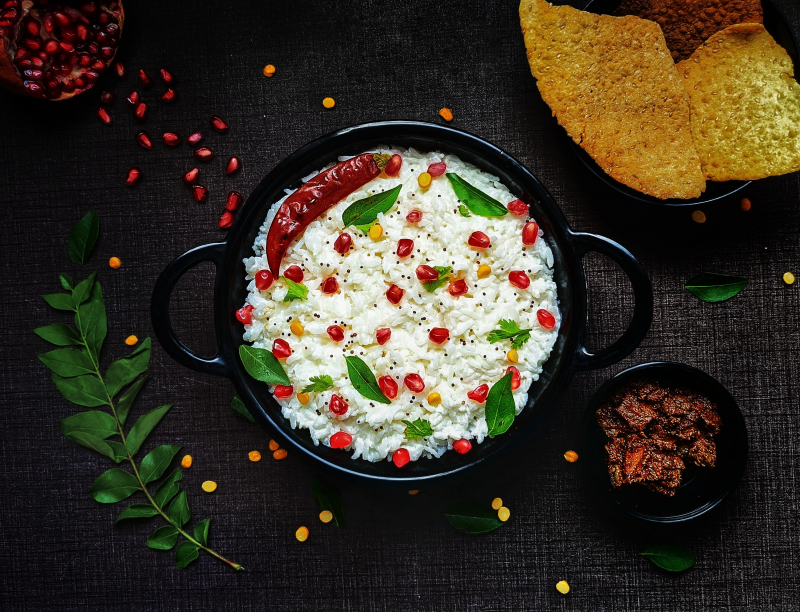
Photo by Sumeet B on Unsplash 
Photo by Rupinder Singh on Unsplash












